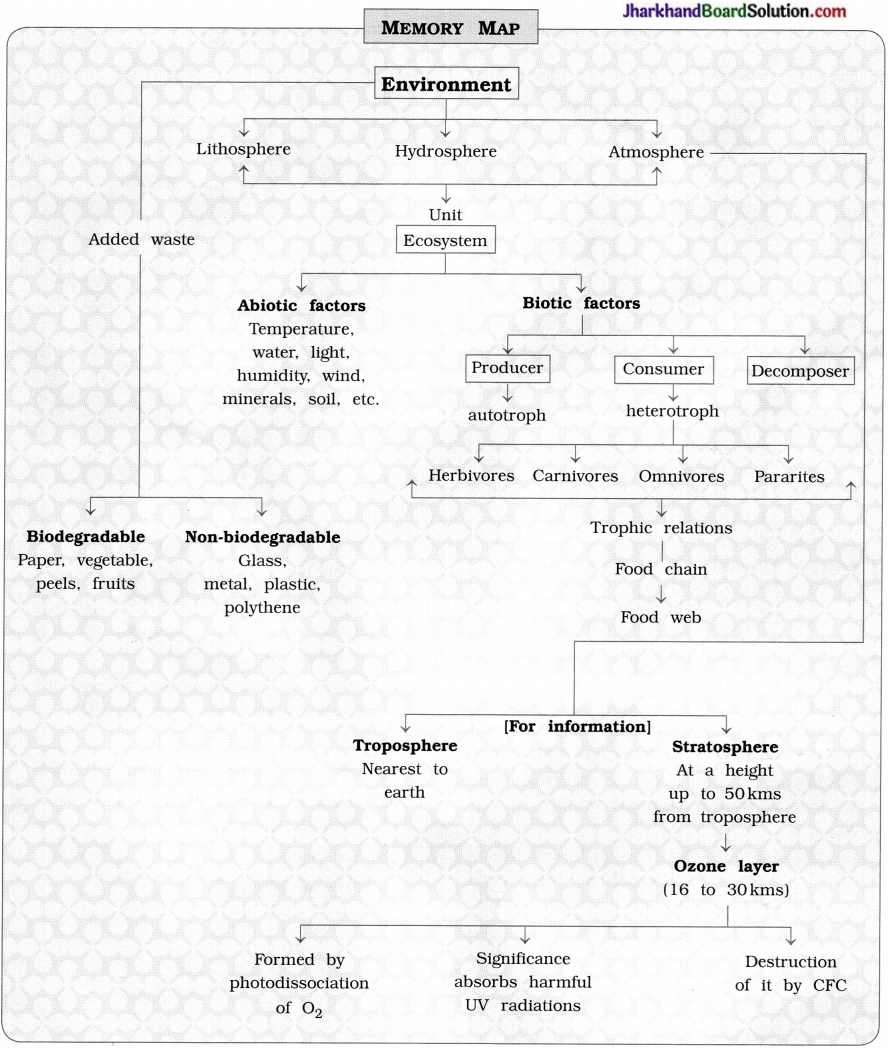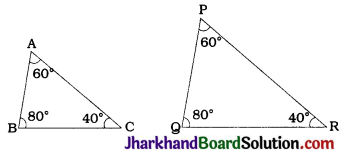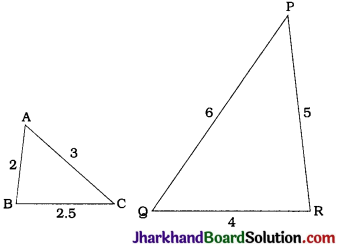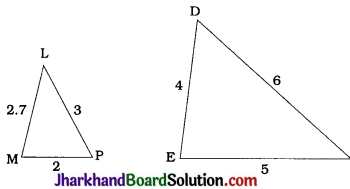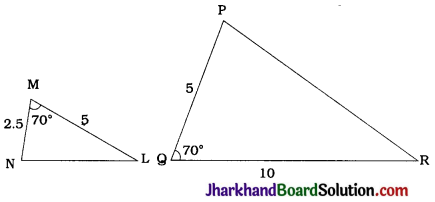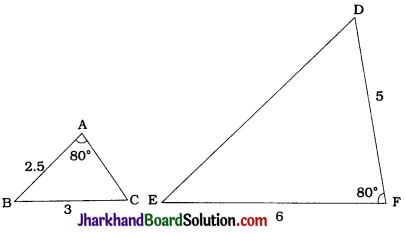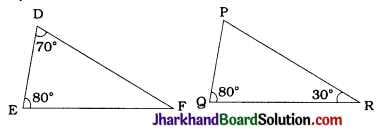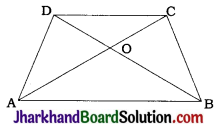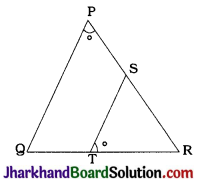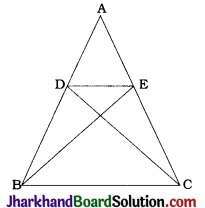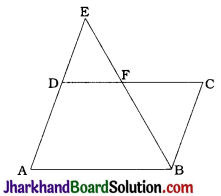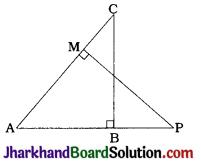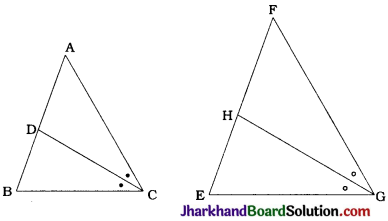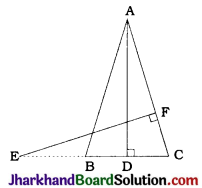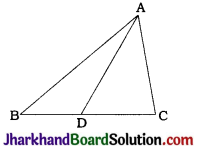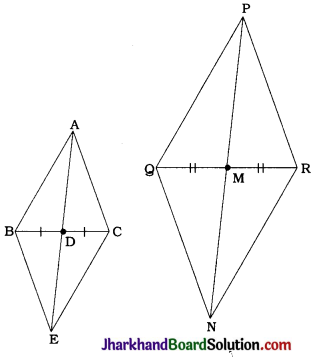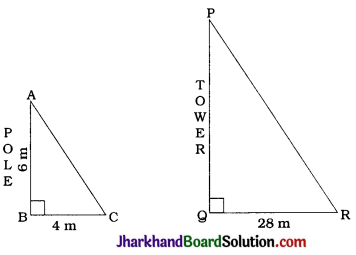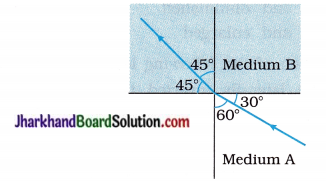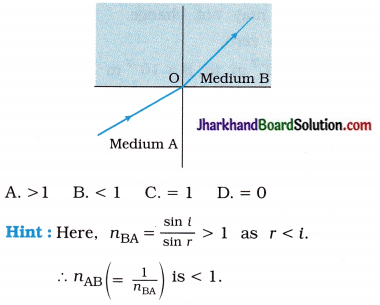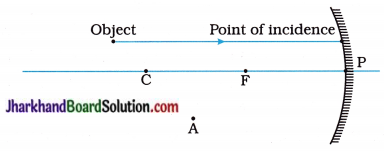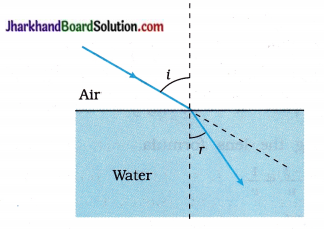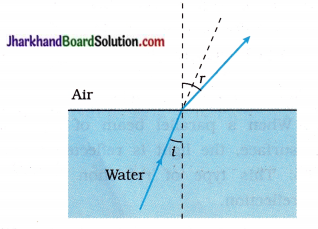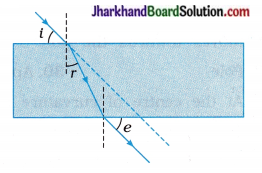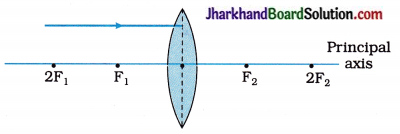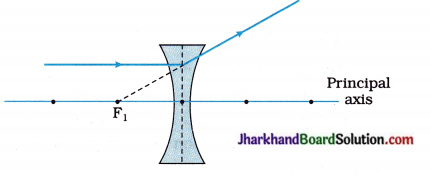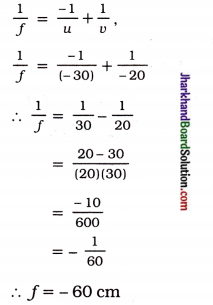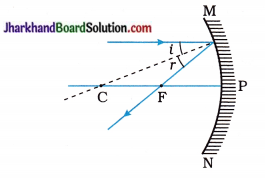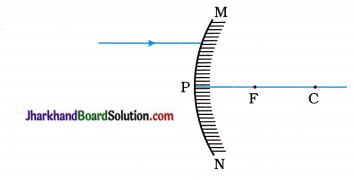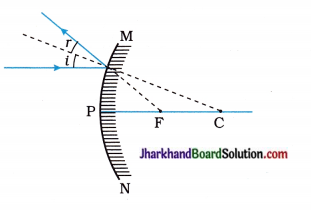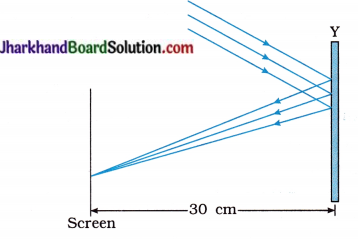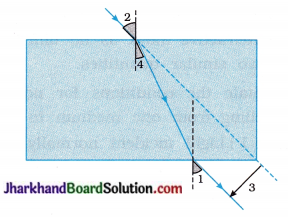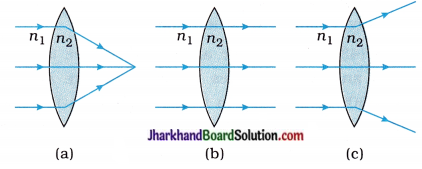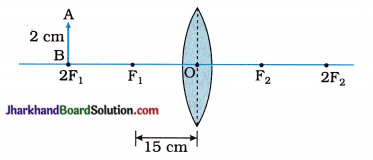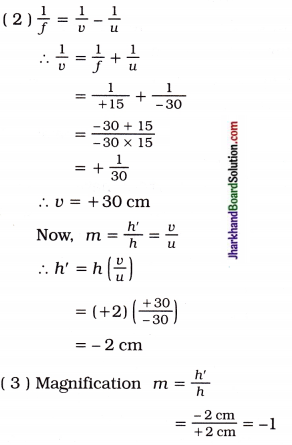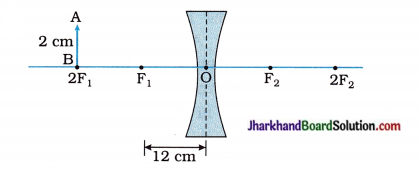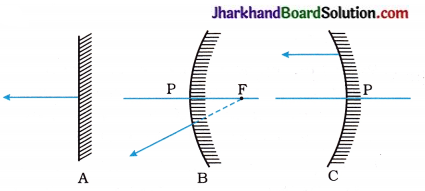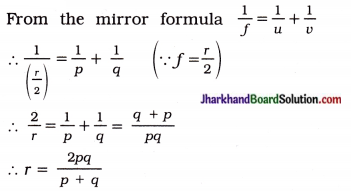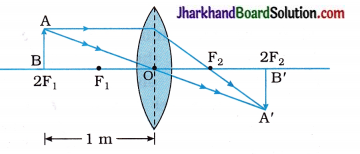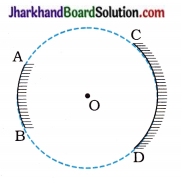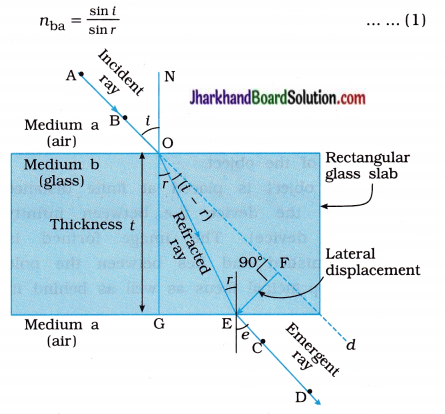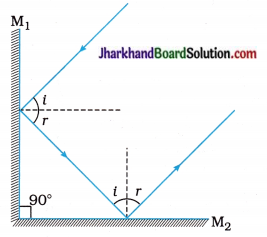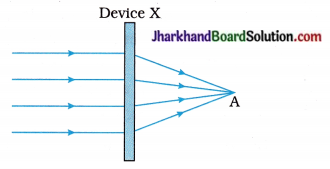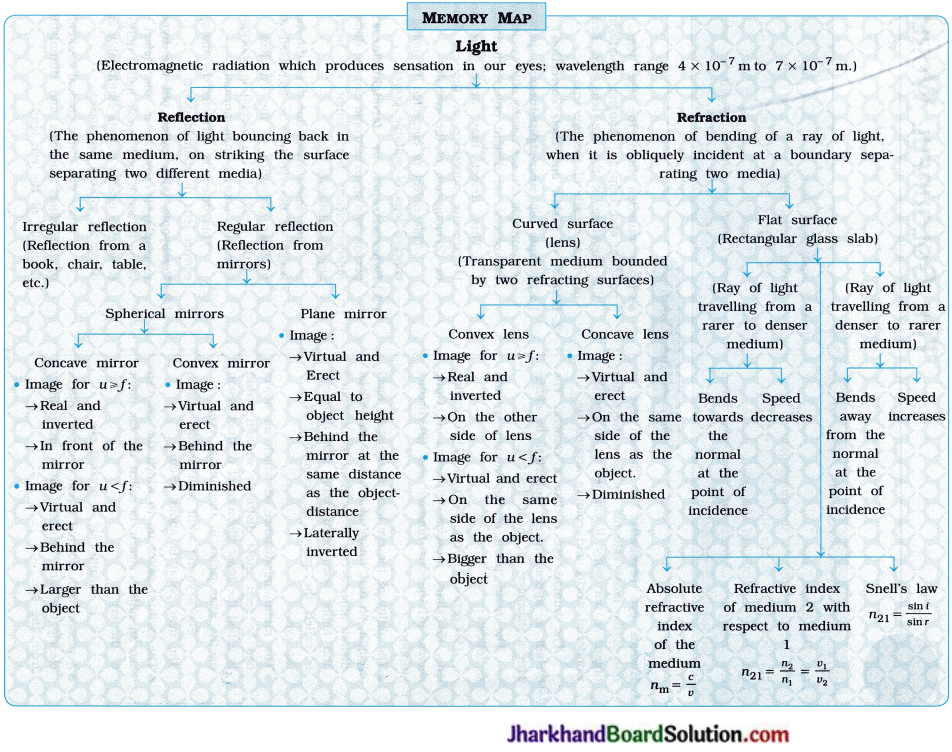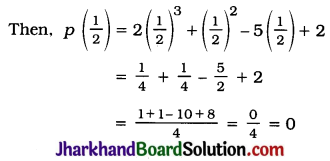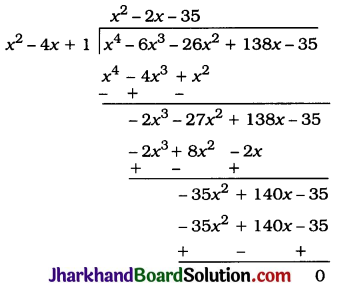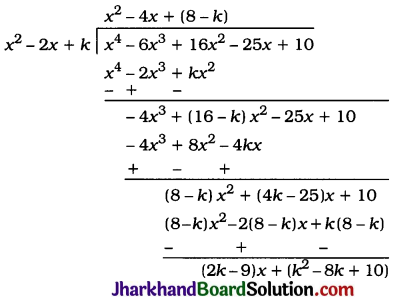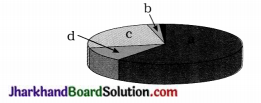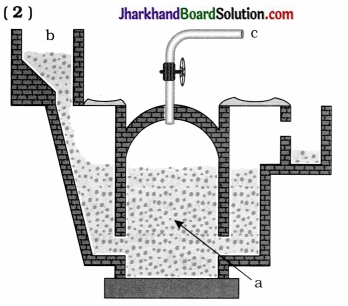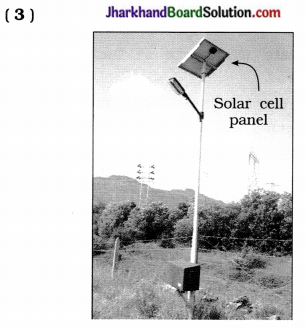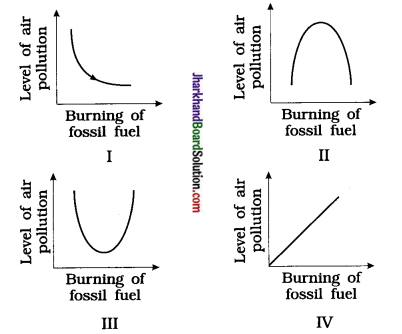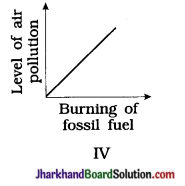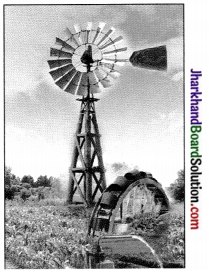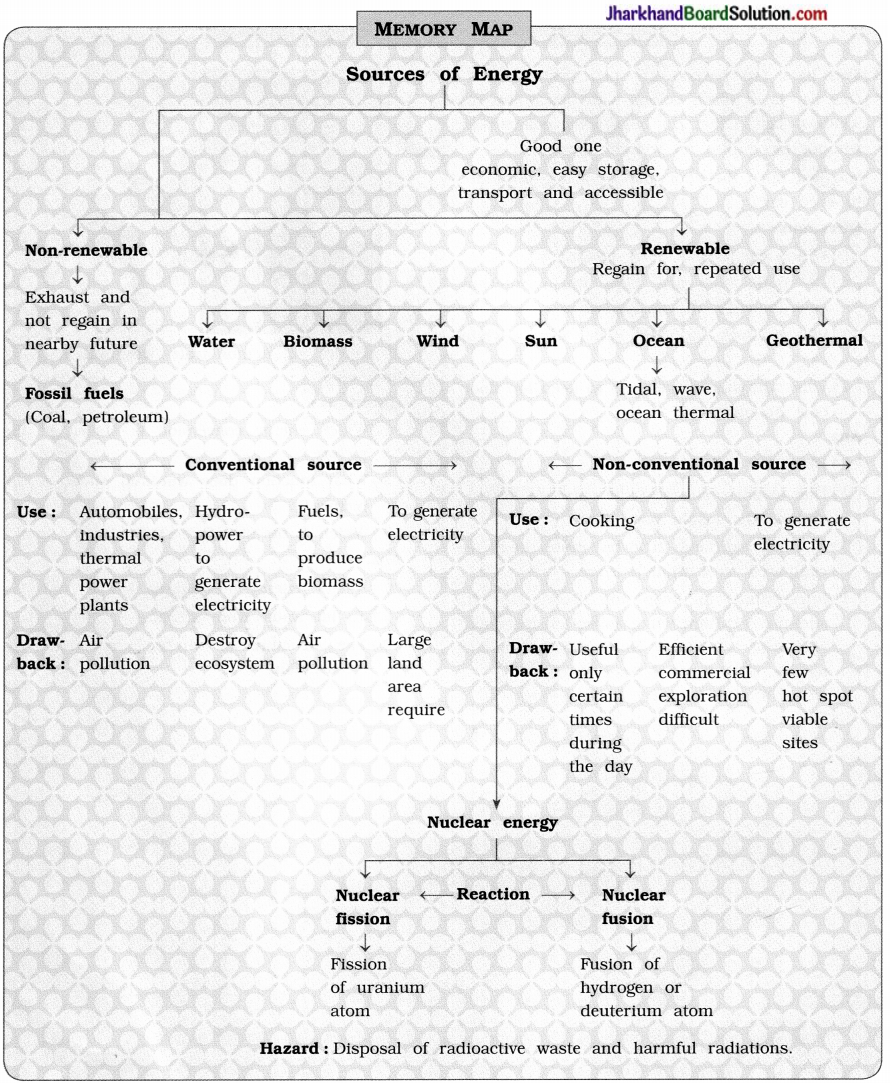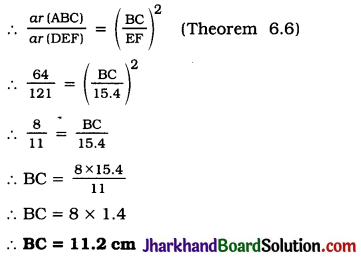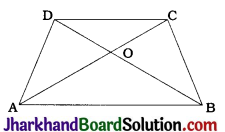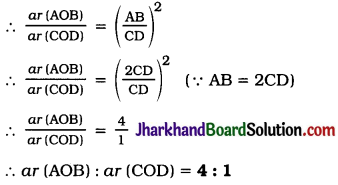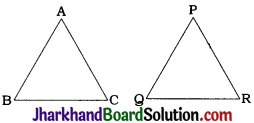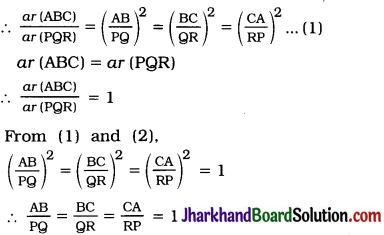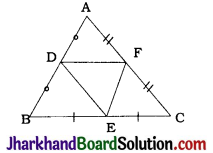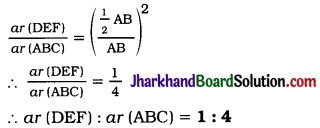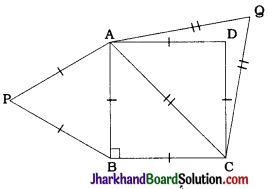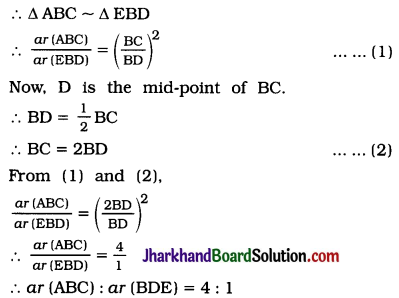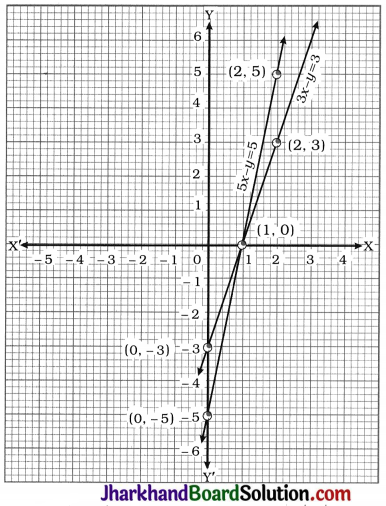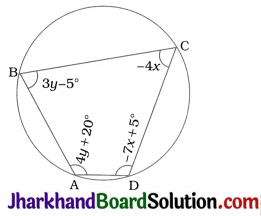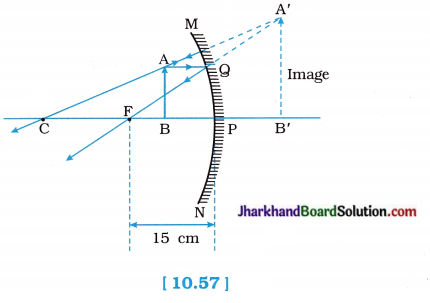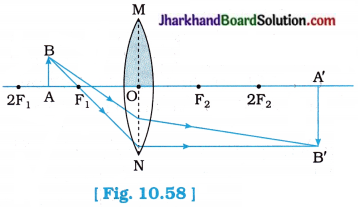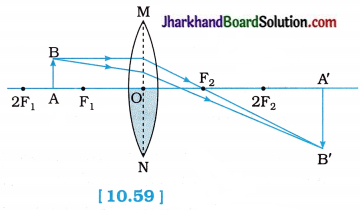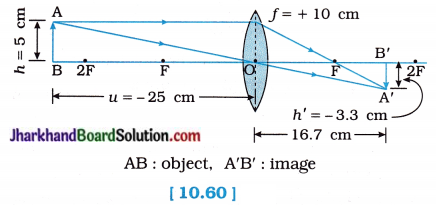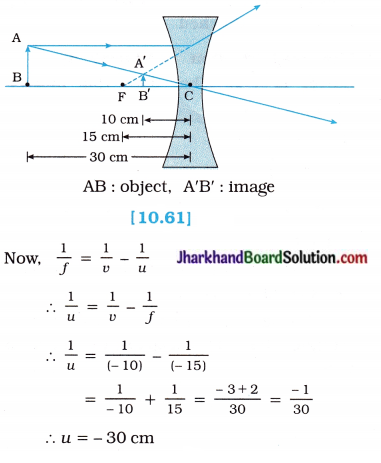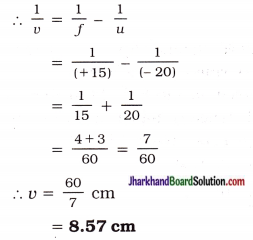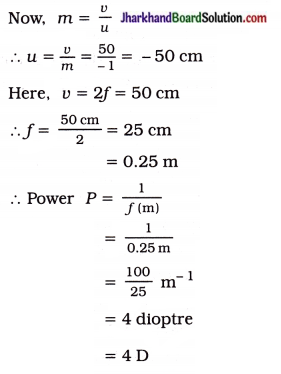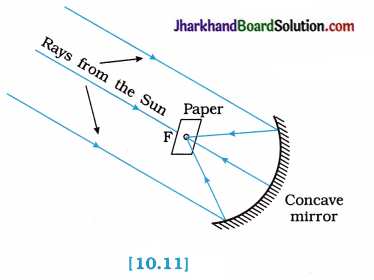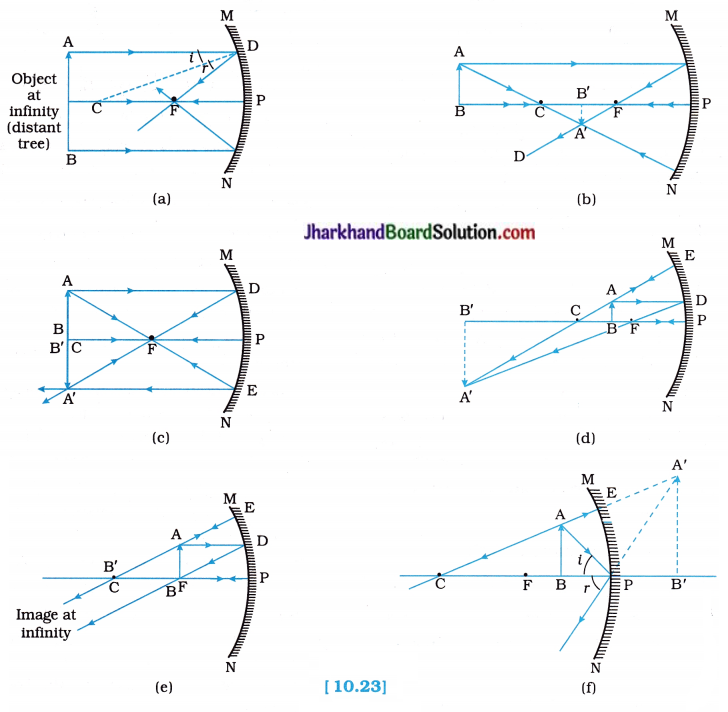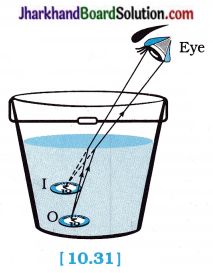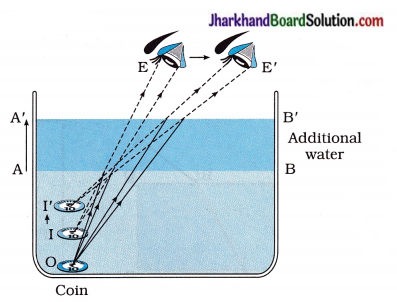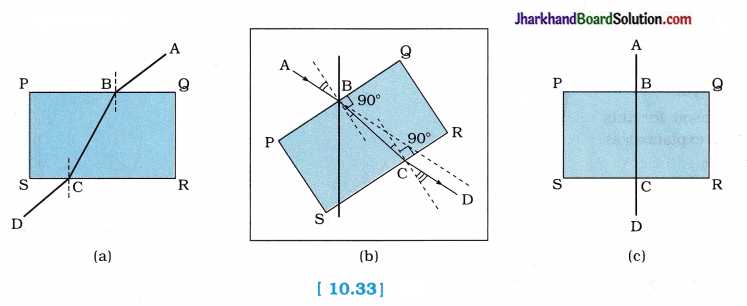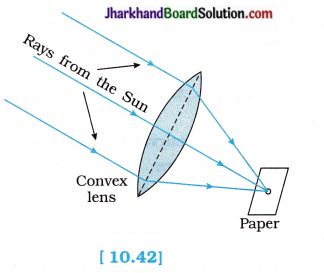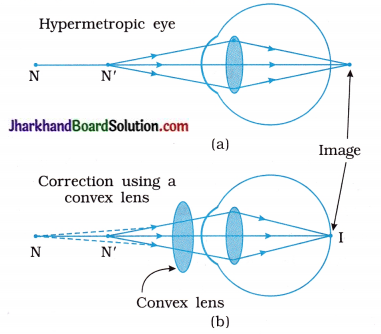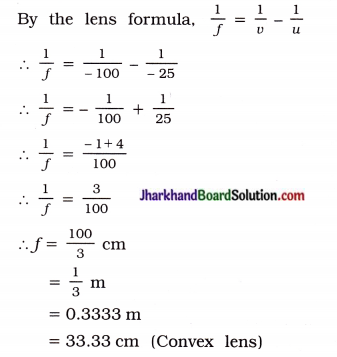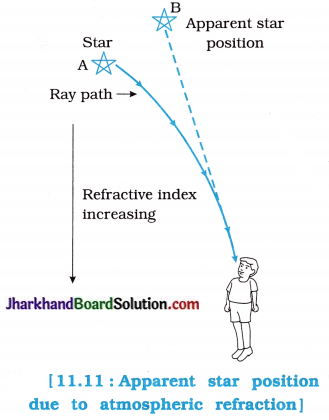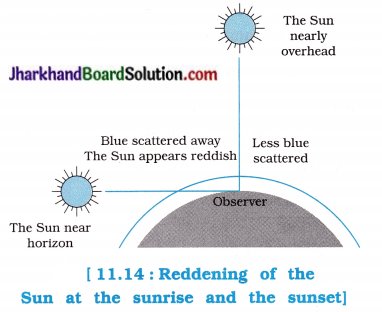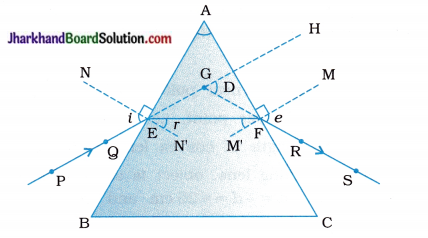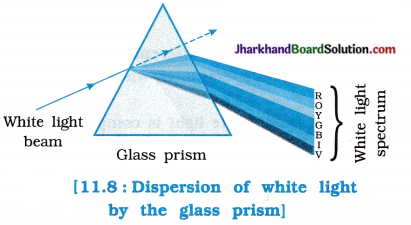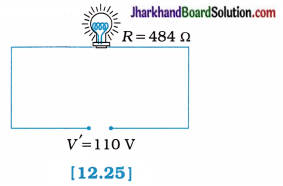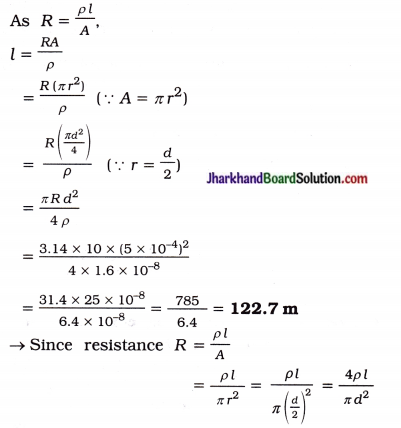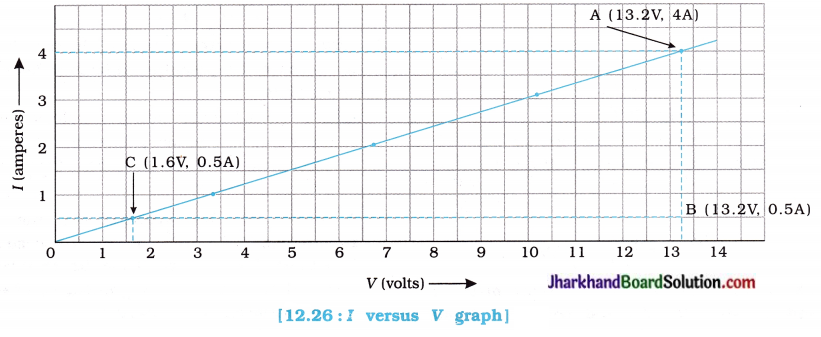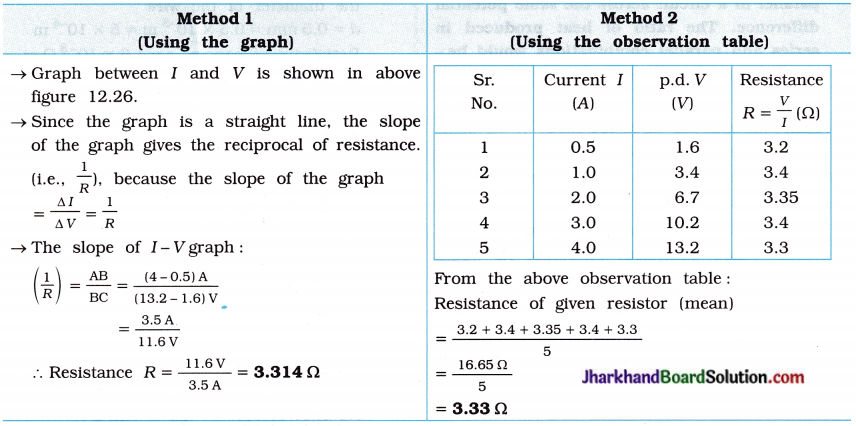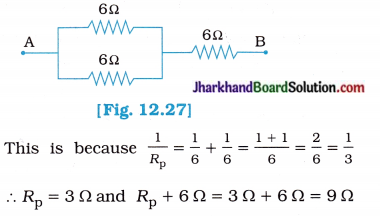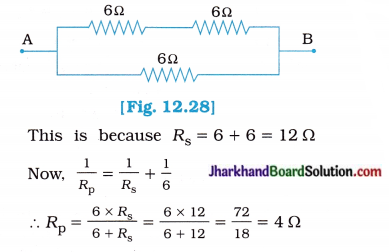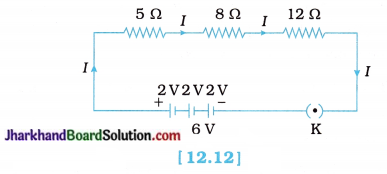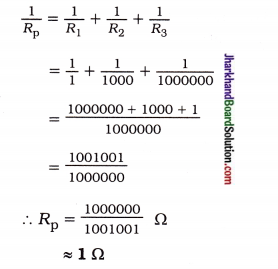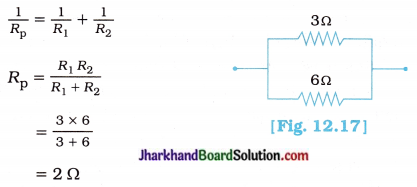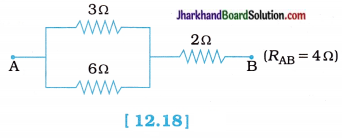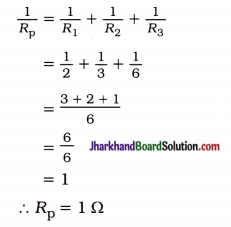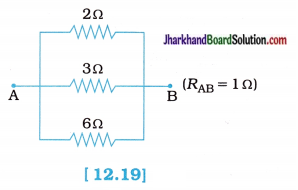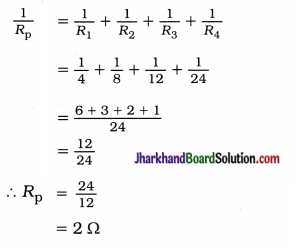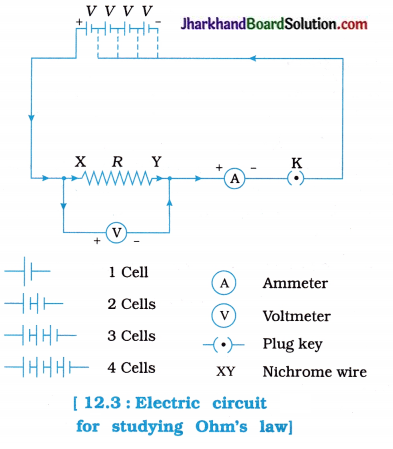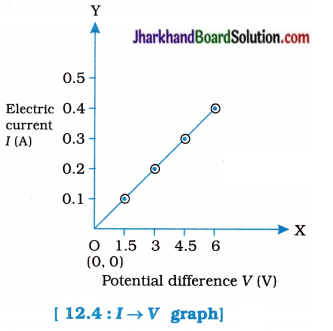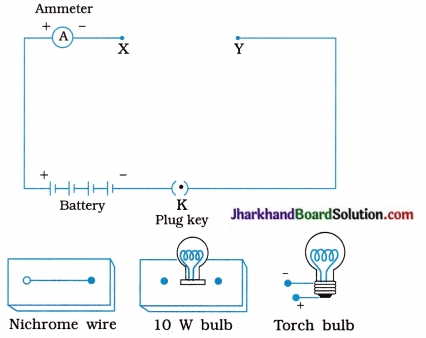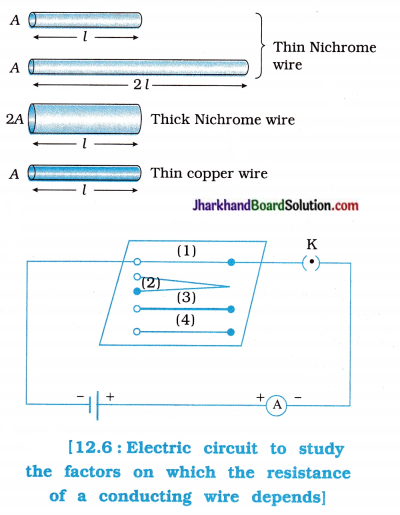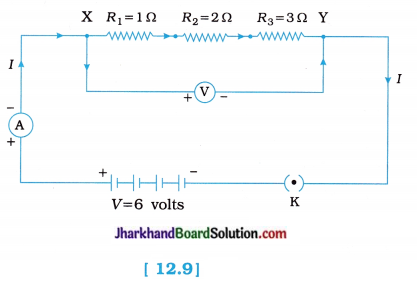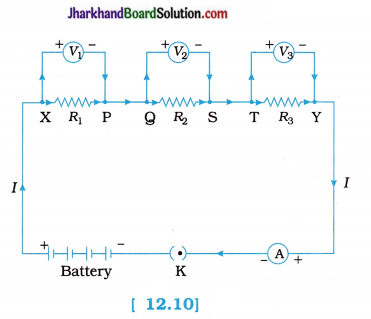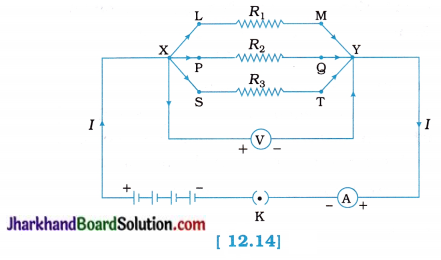Jharkhand Board JAC Class 10 Science Important Questions Chapter 15 Our Environment Important Questions and Answers.
JAC Board Class 10 Science Important Questions Chapter 15 Our Environment
Additional Questions and Answers
Question 1.
Distinguish between:
(1) Biodegradable wastes and Non-biodegradable wastes
Answer:
| Biodegradable wastes | Non-biodegradable wastes |
| 1. The waste materials which can be broken down by biological processes are called biodegradable wastes. | 1. The waste materials which cannot broken down by biological processes are called non-biodegradable wastes. |
| 2. Disposal of these can be done by the activity of decomposers. | 2. Disposal of these cannot be done by the activity of decomposers. |
| 3. Biodegradable wastes are organic substances which are the products of living organisms. | 3. Synthetic man-made substances are there in non- biodegradable wastes. |
| 4. Decaying vegetables and fruits, peels, scales, dead bodies, etc. are biodegradable wastes. | 4. Glass, plastics, polythenes, chemical pesticides, etc. are non-biodegradable wastes. |
(2) Producer organisms and Consumer organisms
Answer:
| Producer organisms | Consumer organisms |
| 1. These are autotrophic organisms. | 1. These are heterotrophic organisms. |
| 2. They transform solar energy into chemical energy and prepare food through photosynthesis for themselves as well as for other organisms. | 2. They consume other organisms or their products for their food. |
| 3. Green plants in terrestrial ecosystem and various types | 3. Animals are consumers in any ecosystem. |
| 4. Producers are not divided in any specific category. | 4. Consumers are divided as herbivores, carnivores, omnivores and parasites categories. |
Question 2.
Give scientific reasons for the following statements:
(1) Consumers are directly or indirectly dependent on green plants for energy.
Answer:
In ecosystem, green plants absorb solar energy and transform it in chemical energy. Thus at first trophic level green plants produce food by transforming chemical energy from available solar energy.
Consumers consume other organisms or their products as food for their energy requirement. Flow of energy occurs in form of food from green plants to herbivores and from it to carnivores. Consumers are heterotrophic so their energy requirement is satisfied from lower trophic level.
Thus, consumers are directly or indirectly dependent on green plants for energy.
![]()
(2) Energy flow is always unidirectional in an ecosystem.
Answer:
The solar energy enters in an ecosystem through the process of photosynthesis performed by green plants. The energy that is captured by green plants does not revert back to the sun.
From green plants energy passes to upper trophic levels of consumers. Energy obtained by herbivores does not come back to the green plants. As it moves progressively through the various trophic levels it is no longer available to s the previous level. Thus, energy flow is always unidirectional in s an ecosystem.
(3) The trophic relationships of organisms occur in form of food webs.
Answer:
In nature, organisms are interlinked for food to form food chain. Among various ecosystems, each one is having definite food chain. But single organism is never dependent only on one organism for food. So trophic relationships for food can never be explained as straight chain. The individuals involved in food chain of one ecosystem are also linked with food chains of other ecosystems.
So, trophic relations for food do not operate in isolation but interlinked to form complex net called food web.
Thus, the trophic relationships of organisms occur in form of food web.
(4) It is necessary to prevent the uncontrolled use of pesticides and other chemicals.
Answer:
Pesticides and other chemicals are used in order to protect the crops from diseases or pests. Such chemicals are non-biodegradable. The amount of these chemicals increases in the soil or water bodies due to uncontrolled use of it. From soil or water they enter in the body of plants and then it passes in trophic levels of food chain.
They get accumulated progressively at each trophic level as these chemicals are not degradable. Due b to biomagnification, high concentration of such chemical causes lethal effects on higher level carnivores animals. Some such chemicals prove lethal for organisms of lower trophic level too. These chemicals reach upto human beings too through food.
Thus, it is necessary to prevent the uncontrolled use of pesticides and other chemicals.
(5) The main responsible factor for ‘ depletion of ozone layer is CFC.
Answer:
The ozone layer in stratosphere absorbs s harmful ultraviolet radiation from the sunlight and b prevents it from reaching the earth.
CFC (Chlorofluorocarbon) adds chlorine (Cl–) in atmosphere. The chlorine atom reacts with ozone and removes an atom of oxygen one by one. One atom of chlorine can decompose many molecules of ozone in this fashion. CFC thus causes about 80% of the total depletion of ozone.
Thus, the main responsible factor for depletion of ozone layer is CFC.
(6) The production of household waste can be reduced by few common steps.
Answer:
- Buy loose fruits and vegetables in order to avoid packaging.
- Limit the use of disposable items such as razors, pens, nappies, paper napkins, cups, plates, etc.
- Buy reusable carry bags from super-markets. Stop using plastics.
- Use rechargeable batteries.
- Do not throw old clothes and shoes but donate them.
- Reuse the back of papers as scrap paper.
- Biodegradable wastes can be decomposed by composting at home. This will reduce the amount of wastes which go out of the house.
Thus, follow the principle of reuse, recycle and reduce which can substantially reduce the amount of household waste.
Question 3.
Carefully observe the given diagram and answer the questions related it:
(1) Only 10% energy is transferred from one trophic level to its upper trophic level. From following diagram how much energy available to second and third trophic level?
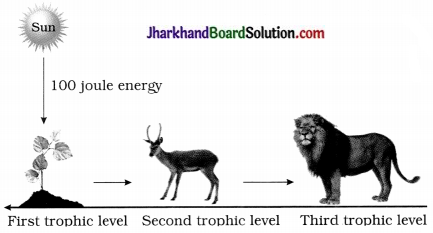
Answer:
At second trophic level 1 joule energy available.
At third trophic level 0.1 joule energy available.
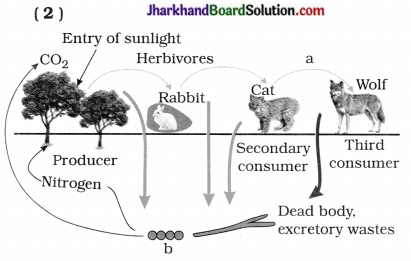
Questions :
(1) Give the name of ’a’ and mention its category.
(2) Give the name of ‘b’ and mention its function.
Answer:
(1) a – Carnivores
Categories : Primary carnivores and higher carnivores
(2) b – Decomposers (Bacteria and fungi)
Function: Decompose dead bodies and excretory wastes
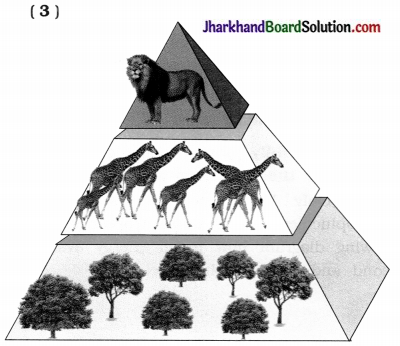
Questions:
(1) Which trophic level has maximum number of organisms? Why?
(2) Why number of secondary consumers are less than herbivores?
(3) Why lion is placed at the top of pyramid?
Answer:
(1) Maximum number of organisms are at first trophic level because trees and shrubs are producers supplies food and energy to giraffe.
(2) Because secondary consumers obtained only 10 % energy from the tropic level of harbivores.
(3) Because lion is higher carnivores having less population as shown in the pyramid.
(4) Observe satellite picture showing ozone layer over Antarctica. What is shown in picture? Give the name of compound responsible for it.
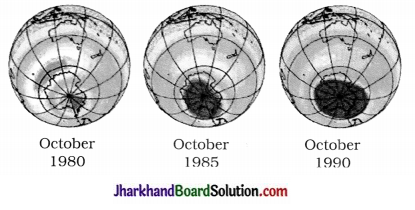
Answer:
Picture shows ozone hole which is caused by CFC (Chlorofluorocarbon) compound
(5) Fill the blank in following given table for terrestrial food chain :
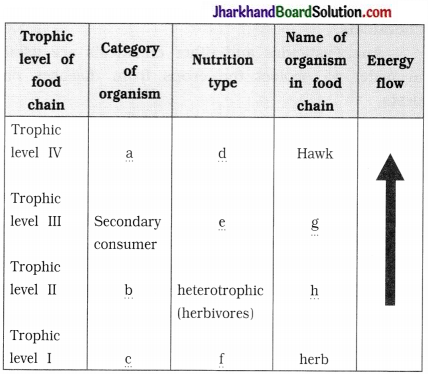
Answer:
- a – Third order consumer
- b – Primary consumer
- c – Producer
- d – Heterotrophic
- e – Heterotrophic
- f – Autotrophic
- g – Snake
- h – Rat
Objective Questions and Answers
Question 1.
Answer the following questions in short:
(1) Who affects the environment the most?
Answer:
Human activities affect the environment most.
(2) Which is main functional unit of an environment?
Answer:
Ecosystem is main functional unit of an environment.
(3) What happens to the dead plants and dead animals?
Answer:
Decomposers decompose complex organic matter into inorganic constituents that are present in dead plants and dead animals.
(4) What are various orders of food chain named as?
Answer:
Various levels of food chain are named as trophic levels.
(5) How many trophic levels occur in food chain?
Answer:
There are three or four trophic levels in a food chain.
(6) Which trophic level has maximum and which trophic level has minimum number of organisms?
Answer:
In a food chain, maximum number of organisms are at first trophic level (at producers level) and minimum number of organisms are at fourth trophic level (higher carnivores).
![]()
(7) Can any single organism occupy two different trophic levels? Yes or no. Explain.
Answer:
Yes. Rat occupies herbivores trophic level as primary consumer and also occupies carnivores trophic level as secondary consumer.
(8) Construct food chain from following organisms:
(a) Frog, insects, birds, grass.
(b) Fish, algae, small animals, large fish
Answer:
(a) Grass → insects → frog → birds
(b) Algae → small animals → fish → large fish
(9) Why all food chains begin with organisms that contain chlorophyll?
Answer:
Chlorophyll containing organisms are able to capture solar energy and covert this into chemical energy. Because of it energy flow is continued in an ecosystem.
(10) Among snake, insects, frog, plants, hawk which one is an organism of fourth trophic level?
Answer:
Snake
(11) Among grass, deer, lion by whom maximum energy is transported to its upper trophic level?
Answer:
Grass
(12) Mention the amount of solar energy captured by the green plants out of the total energy that reaches on the earth from the sun and mention the percentage of energy, which is transferred from one trophic level to next higher one.
Answer:
The green plants in a terrestrial ecosystem capture about 1 % of the energy of sunlight falling on their leaves. An average 10% energy is transferred from one trophic level to the next higher one.
(13) List two methods of safe disposal of the non-biodegradable waste.
Answer:
- By recycling
- By underground dumping
(14) Which chemical is used in fire extinguishers? How it is harmful?
Answer:
CFCs (chlorofluorocarbons) is used in fire extinguishers. It is harmful as it leads to depletion of ozone layer.
(15) Why is straight-line food chain is not common in the natural ecosystem?
Answer:
In the natural ecosystem each organism is generally eat two or more other kinds of organisms which is in turn are eaten by several other organisms. So, straight-line food chain is not common in the natural ecosystem.
(16) What is the function of ozone in the upper atmosphere?
Answer:
Ozone shields the surface of the earth from harmful ultraviolet radiation from the sun.
(17) Name two natural and two artificial ecosystems.
Answer:
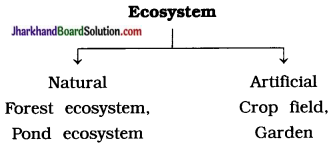
(18) Name the natural cleansing agent in an ecosystem.
Answer:
Decomposers (e.g., bacteria, fungi) and Scavengers (e.g., kite, crow).
(19) Why are autotrophs called producers and heterotrophs called consumers?
Answer:
Autotrophs are green plants which perform photosynthesis and produce organic compounds (carbohydrates). So, they are called producers. Heterotrophs consume food from other organisms. So they are called consumers.
Question 2.
Define : OR Explain the terms :
(1) Ecosystem
Answer:
A system formed by an interaction between biotic components and the physical environment is called an ecosystem.
(2) Decomposers
Answer:
The microorganisms that breakdown the complex organic substances into simple inorganic substances are known as decomposers.
(3) Food chain
Answer:
Living organisms of an ecosystem depend on each other for their food requirement and form a chain turmed as food chain.
(4) Food web
Answer:
The network of overlapping food chains operating in an ecosystem is called a food web.
(5) Artificial ecosystem
Answer:
An ecosystem which is created and maintained by humans is called artificial ecosystem.
(6) Biological magnification
Answer:
A phenomenon of progressive increase in the concentration of non-biodegradable substances in organisms at each successive trophic level is known as biological magnification.
(7) Biodegradable substances
Answer:
The substances which can be disposed off naturally by the action of micro¬organisms / decomposers are called biodegradable substances.
![]()
(8) Non-biodegradable substances
Answer:
The substances that cannot be converted into harmless simpler forms by the action of microorganisms are called non-biodegradable substances.
(9) Producers
Answer:
All green plants and certain bacteria which can produce food by the process of photosynthesis are called producers.
(10) Consumers
Answer:
Those organisms which are dependent on producers for their nutritional requirement are called consumers.
Question 3.
Fill in the blanks:
- Waste substances that are broken down by microbes are called ………………..
- ……………….. is formed by interaction between biotic community and abiotic factors.
- Use of ……………….. chemical is hazardous for ozone layer.
- Farm and garden are ……………….. ecosystem.
- A parasite is in the class of ……………….. category.
- All animals are ……………….. in food chain.
- Food chain ends with ……………….. organisms from where simple inorganic substances return back to the soil.
- Solar energy is transformed into ……………….. by chlorophyllous organisms.
- Main energy source in an ecosystem is ………………..
- A problem of ……………….. is due to entry of non-biodegradable substance.
- UV radiation can cause ……………….. cancer in human beings.
- ……………….. is flow in form of food in an ecosystem.
Answer:
- biodegradable
- Ecosystem
- CFC
- artificial (man-made)
- consumer
- consumers
- decomposers
- chemical energy
- Sun
- biological magnification
- skin
- Energy
Question 4.
State whether the following statements true or false:
- Microbes decomposing dead bodies are located at trophic level of producers.
- Sun is ultimate energy source for ecosystems on this earth.
- Wastes which we generated are biodegradable or non-biodegradable.
- Oxygen gets released under the effect of ultraviolet rays on ozone molecules.
- Ecosystem is formed only with biotic components.
- Level of energy decreases as one goes to upper trophic level in an ecosystem.
- Only 10% energy is used at each trophic level from the available energy and remaining is saved for next level of organisms.
- Number of consumers are always more than producers.
- UV radiation absorbs ozone that is deadly poison at ground level.
- In ecosystem food relationships among organisms are in form of food web.
- Water is abiotic factor in pond ecosystem.
- In food chain energy flow is bidirectional.
- All organisms can use only chemical energy.
- Food web is formed due to alternative path for food availability.
- Decomposers are natural scavengers.
Answer:
- False
- True
- True
- False
- False
- True
- False
- False
- False
- True
- True
- False
- True
- True
- True
Question 5.
Chart – diagram based questions :
1. A food chain with four trophic levels is shown in following diagram:
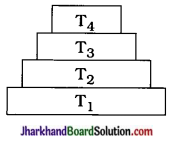
(1) Which trophic level indicates carnivores?
(2) Arrange trophic levels in correct manner on the basis of the amount of available energy.
Answer:
(1) T3 and T4
(2) T1 > T2 >T3 > T4
2. In the chart of energy flow given below identify the decomposers and explain your choice:

Answer:
In the chart B indicates decomposers. They decompose dead materials available from A, C and D.
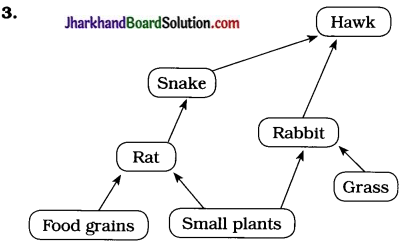
In a given food web,
(1) Identify which one is secondary as well as tertiary consumers.
(2) Identify which one has minimum conc. of pesticides.
Answer:
(1) Hawk
(2) Producers, i.e., food grains, small plants, grass.
Question 6.
Match the following:
(1)
| Column I | Column II |
| 1. Animals feed only on plants | p. Carnivores |
| 2. Animals feed on other animals | q. Decomposers |
| 3. Animals feed on plants as well as animals | r. Herbivores |
| 4. Organisms obtain nutrition from decaying organic matter | s. Omnivores |
Answer:
(1 – r), (2 – p), (3 – s), (4 – q).
(2)
| Column I | Column II | Column III |
| 1. Omnivores | a. Scavenger | p. Grass |
| 2. Producer | b. Secondary consumer | q. Crow |
| 3. Detritus feeding | c. Biconsumer | r. Deer |
| 4. Carnivores | d. Primary consumer | s. Tiger |
| 5. Herbivores | e. Transformer of solar energy | t. Fox |
Answer:
(1 – c – q), (2 – e – p), (3 – a – t), (4 – b – s), (5 – d – r).
(3)
| Column I | Column II |
| 1. Autotroph | p. Convert complex organic matter into inorganic |
| 2. Primary consumer | q. Convert inorganic constituent into organic with the help of sunlight |
| 3. Secondary consumer | r. Plant feeder |
| 4. Decomposer | s. Animal feeder |
Answer:
(1 – q), (2 – r), (3 – s), (4 – p).
![]()
Question 7.
Choose the correct option from those given below each question:
1. Which process is significant in a primary producers for to sustain an ecosystem?
A. Biological magnification
B. Photosynthesis
C. Respiration
D. Water absorption
Answer:
B. Photosynthesis
2. Animals that fed on both producer as well as consumer trophic level are called …………….
A. herbivores
B. carnivores
C. omnivores
D. decomposers
Answer:
C. omnivores
3. There are more herbivores than carnivores in a food chain because …………….
I. carnivores have bigger appetites.
II. a large number of herbivores are needed to support a small number of carnivores.
III. there are more plants for herbivores to eat.
IV much energy is lost in the transfer of energy from herbivores to carnivores.
A. I and III
B. II and IV
C. I and II
D. All of given
Answer:
B. II and IV
4. In a food chain deer feeds on plants. Deer is eaten by a lion. Which of the following statement is correct for it?
I. Lion is secondary consumer and deer is primary consumer.
II. Lion is predator and deer is prey.
III. Lion is primary consumer and deer is secondary consumer.
IV. Lion is tertiary consumer and deer is secondary consumer.
A. I and II only
B. III and IV only
C. II and III only
D. I and IV only
Answer:
A. I and II only
5. Which is possible food chain in pond?
| Producer | Primary consumer | Secondary consumer |
| A. Algae | Fish | Larva of mosquito |
| B. Fish | Algae | Larva of mosquito |
| C. Larva or mosquito | Algae | Fish |
| D. Algae | Larva of mosquito | Fish |
Answer:
Alage, Larva of mosquito, Fish
6. Which of the following option is correct for decomposers feeding on dead organism?
| Bacteria | Fungi | Virus |
| A. No | Yes | Yes |
| B. Yes | No | Yes |
| C. Yes | Yes | No |
| D. Yes | Yes | Yes |
Answer:
Yes, Yes, No
7. In an ecosystem ……………
A. unidirectional flow of both energy and nutrients.
B. cyclic flow of both energy and nutrients.
C. cyclic flow of energy and unidirectional flow of nutrients.
D. unidirectional flow of energy and cyclic flow of nutrients.
Answer:
A. unidirectional flow of both energy and nutrients.
8. A rat is in which category of consumer animals?
A. Herbivores
B. Carnivores
C. Omnivores
D. Decomposer
Answer:
C. Omnivores
9. Which of the following problem is a result of man-made activities?
A. Breaking food chain due to deforestation
B. Global warming
C. Depletion of ozone layer
D. All of the given
Answer:
D. All of the given
10. In an ecosystem third trophic level is always occupied by which animals?
A. Herbivores
B. Carnivores
C. Producer
D. Decomposers
Answer:
B. Carnivores
11. In the agricultural farm with wheat crop, snake, peacock, kite, rat, etc. occur in food chain. Pesticides are spray regular time interval. Which of the following animal has lowest concentration of pesticides?
A. Snake
B. Rat
C. Kite
D. Peacock
Answer:
B. Rat
12. Which of the following statement is wrong in case of food chain?
A. Decomposers can derive their food from all other nutritional substances except producers.
B. The one which are not producers are consumers.
C. More energy is available at lower trophic levels.
D. One organism may be associated with more than one food chain.
Answer:
A. Decomposers can derive their food from all other nutritional substances except producers.
13. Which of the following is an example of biodegradable waste?
A. Vegetables or fruits
B. Glass
C. Plastic
D. Metal
Answer:
A. Vegetables or fruits
14. Which of the following is an example of non-biodegradable waste?
A. Fruits
B. Vegetables
C. Paper
D. Polythene
Answer:
D. Polythene
15. Ecosystem is an interacting system made up of ……………
A. organisms and their physical surroundings.
B. producers and consumers.
C. producers and their physical surroundings.
D. consumers and their physical surroundings.
Answer:
A. organisms and their physical surroundings.
16. What is being form due to entry of harmful chemical in food chain?
A. Bioequilibrium
B. Eutrophication
C. Biological magnification
D. Biological regulation
Answer:
C. Biological magnification
17. What is formed by interdependent organisms to each other for their nutrition?
A. Biosphere
B. Food chain
C. Ecosystem
D. Environment
Answer:
B. Food chain
18. In food chain, organisms which synthesise carbohydrates by the conversion of radiant energy are called ……………
A. primary producers
B. primary consumers
C. primary carnivores
D. primary decomposers
Answer:
A. primary producers
19. In the food chain comprising of a frog, snake, grass, grasshopper, which organisms is at third trophic level in it?
A. Snake
B. Frog
C. Grass
D. Grasshopper
Answer:
B. Frog
20. An ecosystem has producers, herbivores and carnivores but without which of following it is not complete?
A. Secondary carnivores
B. Higher carnivores
C. Omnivores
D. Decomposers
Answer:
D. Decomposers
21. Which trophic level has highest energy in an ecosystem?
A. Producers
B. Herbivores
C. Primary carnivores
D. Higher carnivores
Answer:
A. Producers
22. Which trophic level, lowest energy available in an ecosystem?
A. Producer
B. Herbivores
C. Carnivores
D. Decomposers
Answer:
C. Carnivores
23. Which of following is wrong statement?
A. All green plants and blue-green algae are producers.
B. Green plants derived their food from organic compounds.
C. Producers synthesise their food by using inorganic elements.
D. Green plants transformed solar energy into chemical energy.
Answer:
B. Green plants derived their food from organic compounds.
24. What is the role of decomposers in an ecosystem?
A. Converts inorganic elements in simple form
B. Converts organic compound in inorganic elements
C. Converts inorganic elements in organic compounds
D. Both B and C
Answer:
B. Converts organic compound in inorganic elements
25. Which of the following constitute a food chain?
A. Grass, wheat and mango
B. Grass, goat and human
C. Goat, cow and elephant
D. Grass, fish and goat
Answer:
B. Grass, goat and human
26. Which of the following are environment friendly practices?
A. Carrying cloth-bags to purchases in while shopping.
B. Switching off unnecessary lights and fAnswer:
C. Use reusuable razors, nappies and pens.
D. All of the given.
Answer:
D. All of the given.
27. When frog uses grasshopper as food, then energy flow occurs from ……………
A. producer to decomposer.
B. producer to primary consumer.
C. primary consumer to secondary consumer.
D. primary carnivores to higher carnivores.
Answer:
C. primary consumer to secondary consumer.
28. Statement X: Decomposers satisfy their energy requirement directly from producers.
Statement Y: The amount of available energy in an ecosystem depends on the rate of photosynthesis carried out by the producers.
Which option is correct for statements X and Y?
A. X and Y both correct.
B. X and Y both incorrect.
C. X correct and Y incorrect.
D. X incorrect and Y correct.
Answer:
D. X incorrect and Y correct.
29. Statement X: Reduction in number of prey altimately results in reduction of the number of predator.
Statement Y: Ozone layer absorbs harmful ultraviolet radiations.
Which option is correct for statements X and Y?
A. X and Y both correct.
B. X and Y both incorrect.
C. X correct and Y incorrect.
D. X incorrect and Y correct.
Answer:
A. X and Y both correct.
30. Usually green plants are at first level in an ecosystem because ……………
A. they are widely spread on this earth.
B. they are fixed at one place in soil.
C. they synthesise food with the help of sunlight.
D. herbivores are more than carnivores.
Answer:
C. they synthesise food with the help of sunlight.
![]()
31. Which is the correct statement regarding food chain?
A. All consumers are not producers.
B. More energy is available at lower trophic levels.
C. One organism may be involved in more than one food chain.
D. All of the given
Answer:
D. All of the given
32. Which organism is more affected by biological magnification problem arising due to entry of DDT in pond ecosystem?
A. Man
B. Birds habitat near the pond
C. Fishes in pond
D. Aquatic plants in pond
Answer:
A. Man
33. Which of the following groups have only non- biodegradable components?
1. wood, paper, leather
2. polythene, detergent, PVC
3. plastic, detergent, glass
4. plastic, grass, animal dung
A. 3
B. 4
C. 1 and 3
D. 2 and 3
Answer:
D. 2 and 3
34. By whom the number of organisms are limited at trophic level of food chain?
A. Less availability of energy at higher tropic level
B. Sufficient food supply
C. Polluted air
D. Water
Answer:
A. Less availability of energy at higher tropic level
35. In which category does the human beings fall in an ecosystem?
A. Herbivores
B. Carnivores
C. Decomposers
D. Omnivores
Answer:
D. Omnivores
Question 8.
Answer as directed : (Miscellaneous)
(1) Give the full form of : CFCs, UNEP
Answer:
- CFCs – Chloroflurocarbons
- UNEP – United Nations Environment Programme
(2) Use of disposable plastic plates should be prevented because … (Complete the sentence.)
Answer:
It is made-up of non-biodegradable substance.
(3) Find correct sequence for food chain …
I. producers → decomposers → herbivores
II. producers → herbivores → carnivores
III. decomposers → producers → herbivores
IV. producers herbivores decomposers → carnivores → omnivores
Answer:
II. producers herbivores → carnivores
(4) Who am I?
I am a product of oxygen under the influence of UV radiation and I absorb UV rays.
Answer:
Ozone (O3)
(5) Select the mismatched pair in the following and correct it.
I. Parasite – Consumers which obtain liquid food nutrients from host organisms.
II. Agro-ecosystem – A man-made ecosystem
III. UV radiation – Causes skin cancer in human beings.
IV Ecosystem – Physical components of environment.
Answer:
IV. is a mismatched pair. Ecosystem consists of an interaction of physical components of environment and biotic components.
(6) When a population of animal ‘X’ is introduced into the biotic community of an ecosystem, the number of lions increased while the number of deer decreased. Which is correct option for animal ‘X’?
Answer:
X animal is a predator of deer and a prey of lion.
(7) Among the following, which have posed a threat to the environment?
Body spray, bacteria, aerosols, CFCs, wild grass
Answer:
Body spray, aerosols, CFCs
(8) A food chain comprising hawk, snake, paddy and mice. If 15,000 J of energy available to mice then how much energy will be in paddy and how much energy will be available to hawk.
Answer:
15,000 J of energy will be in paddy and 150 J of energy will be available to hawk.
(9) Smallest energy transfer : secondary consumers to tertiary consumers::
largest energy transfer : …………….
Answer:
producers level
(10) In which unit is amount of atmospheric ozone expressed?
Answer:
Dobson Unit (DU)
Value Based Questions With Answers
Question 1.
Improvement in our lifestyle have resulted in generation of greater amount of waste material. We use more and more disposable things due to our changed lifestyle and wrong attitude.
Questions:
- Name the two factors that have contributed to the deterioration of our environment.
- Why do we generate lot of waste now-a-days?
- Why most of the wastes from our homes contain more and more non-biodegradable substances?
Answer:
- Advancement in the technology, excessive non-biodegradable waste generation that have contributed to the deterioration of our environment.
- We are generating lot of waste now-a-day because of improvement in our lifestyles due to advanced technology and our changed attitude. We do not have environment conscience and thus we generate more waste.
- Changes in packaging have resulted in our waste becoming non-biodegradable. We have tendency of “use and throw” which is causing more non-biodegradable substances in our wastes.
Question 2.
Advanced agricultural practice leads to excessive use of fertilisers, pesticides and irrigation. Use of such agricultural products can cause some health issues in human beings. Uncontroled use of chemicals can also cause adverse effect on our environment.
Questions:
1. Name the ecological process involved in the above case.
2. How is soil affected by this phenomena?
3. Why is pesticide persist for long time in an environment?
Answer:
1. Biological magnification.
2. Soil is affected in following concern :
- Pesticides are toxic that accumulate in soil.
- Salinity of soil increases.
- Soil becomes non-fertile.
3. Pesticides are non-biodegradable wastes. They are not converted into simple substances by decomposers.
Practical Skill Based Questions With Answers
Question 1.
The diagram shows the organisms in a habitat.
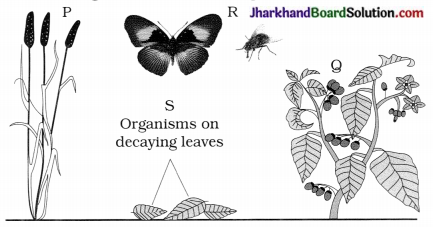
Which of the following indicates the correct feeding relationships of these organisms shown by four students?

Answer:

Question 2.
(1) A man consumed curd or buttermilk after meal which help in the process of digestion. Milk is fermented into curd by Lactobacillus bacteria. Imagine a food chain and state the category of Lactobacillus and human.
(2) Instead of curd, if we use milk than which trophic level is occupied by us?
Answer:
(1) Lactobacillus – Third trophic level → consumer / decomposer
Human – Fourth trophic level → consumer
(2) Third trophic level / second level of consumer
Question 3.
Observe the picture carefully and answer the following questions :

- State the category according to the food eaten by encircled organisms.
- State the trophic level observed in the picture.
- State two abiotic components of an environment.
- Which is an important process of an ecosystem observed in a picture?
Answer:
- Squirrel and deer are both herbivores.
- Producer (Trophic level – I) and herbivores (Trophic level – II)
- Soil, light
- Flow of energy
Memory Map:
